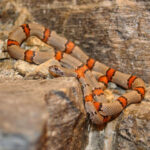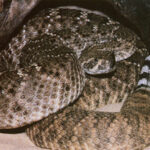When considering whether to purchase a snake, the first fact you need to be aware of is that reptiles are nothing like dogs or cats. Though snakes may associate a scent with their owners, they do not harbor any particular feelings for them. They are not loyal and affectionate, and they cannot be cuddled or played with. In fact, handling a snake too much can be bad for the animal’s health, and may cause it to stop eating. It is very important to understand that snakes require a specific kind of care, and while they are beautiful and fascinating, they are not pets in the traditional sense.
If you understand the above and would still like to venture into the world of owning snakes, the next decision you need to make is what type of snake to buy. There are several important factors to consider. Primarily you will be concerned with what the snake will eat, and what environment it requires. The more exotic snakes are, unfortunately, much more difficult to care for, and require more time and money to maintain. As a first snake, it may be wise to choose one that is hardy, such as a rat snake or a corn snake.
The majority of snakes eat mice, although some smaller snakes such as garter snakes eat bugs and toads, and king snakes will even eat other snakes. Small snakes may require baby mice, since fully-grown mice will be much too large for them to consume. Most pet stores sell mice that you may feed to snakes, and you should make sure that you have a local source of food before you buy your snake.
An important point on the subject of feeding is that most stores will sell you mice live. It can be dangerous to feed your snake a live, fully-grown mouse, as there are documented cases of the mouse attacking and killing the snake in self-defense. Even if your snake manages to subdue the mouse, there is a chance it may be injured in the process. A strong recommendation is to freeze the mice before feeding them to the snake. It is a more humane, peaceful death for the mouse, and safer for your snake. If you choose this method, you must always warm the mouse before feeding it to the snake; the easiest way to do this is to place the frozen mouse in hot water for about half an hour to thaw it out. Make certain it is completely thawed before giving it to the snake.
A note of warning on the bigger varieties such as boas and pythons: though they may start out eating normally-sized mice, eventually they may require rats, or even rabbits, which can be quite expensive. They may also become big enough that two people are needed to handle them, and very large cages are necessary. Many people purchase big snakes without realizing what the requirements for caring for them will be later in their lives, and as a result there are always a significant number of boas and pythons up for adoption. Caring for a big snake is a serious commitment.
Poisonous breeds are also generally a very bad choice for people inexperienced with keeping snakes. Special equipment is required to handle them, and while there is definitely an appeal to owning a dangerous pet, it is a good idea to gain experience with snakes by owning one of the non-poisonous varieties first. In addition, poisonous snakes are often far more expensive.
Most snakes, however, are extremely easy to care for in comparison with other pets. They don’t require much daily attention. On average, a snake will need to be fed between 1 and 4 mice about once a week (though you should check the specific requirements for whichever snake you choose to buy). For most snakes, the cage may be quite simple: a common aquarium, or any other breathable, secure, reasonably sized container may be used. The bottom of the cage may be covered with newspaper (color-print newspapers should not be used) to make cleaning it out easy, and a water bowl should be available to the snake. Though not necessary, it would be a good idea to have an overturned pot with a hole drilled into it for the snake to hide in. The cage will need to be cleaned about once a week. This is usually a simple process of removing the old newspaper, and putting in new newspaper. The water bowl should be checked daily in case the snake overturns or soils it. If you have chosen a more exotic snake, be sure to find out what other requirements it may have, such as heat rocks, high humidity, or large pools of water it may submerge itself in.
There is a balance that you need to strike when it comes to handling your snake. As mentioned above, you must be careful not to handle your snake too much, since it upsets the animal. On the other hand, if you handle your snake very infrequently, it may be more likely to bite, and be very uncomfortable with handling. As a general rule, you will need to be handling your snake each time you clean the cage, which should be approximately once a week. Since you will be taking the snake out of the cage already, this is a good opportunity to keep it out a bit longer and give it a chance to get used to the feeling of being held. This will usually keep your snake calm when you pick it up, and make it less likely to bite you. Snakes are not trainable animals, however, and as an owner you need to understand that your snake will never be tame, and there is always a chance that it could snap or bite.
The majority of snakes are healthy and resilient, but occasionally they may have health problems. The most common issue is for a snake to stop eating. If your snake refuses food for two weeks in a row, you should begin to be concerned. Often, if you are feeding your snake dead mice, you can trigger its appetite by tempting it with a live mouse. If even this doesn’t work, or if your snake seems to be having more serious ailments, you should find a vet to bring your snake to.
Snakes are remarkable creatures, and one may learn a great deal from having them as pets. It is important however, to fully grasp the requirements of keeping a snake before buying one, and realize that they must be treated carefully – kept clean, fed regularly, and not handled too much – in order to keep them happy and healthy. If you are willing to commit to meeting the basic needs outlined in this article, you are ready to go out and begin researching which type of snake you want to buy!






